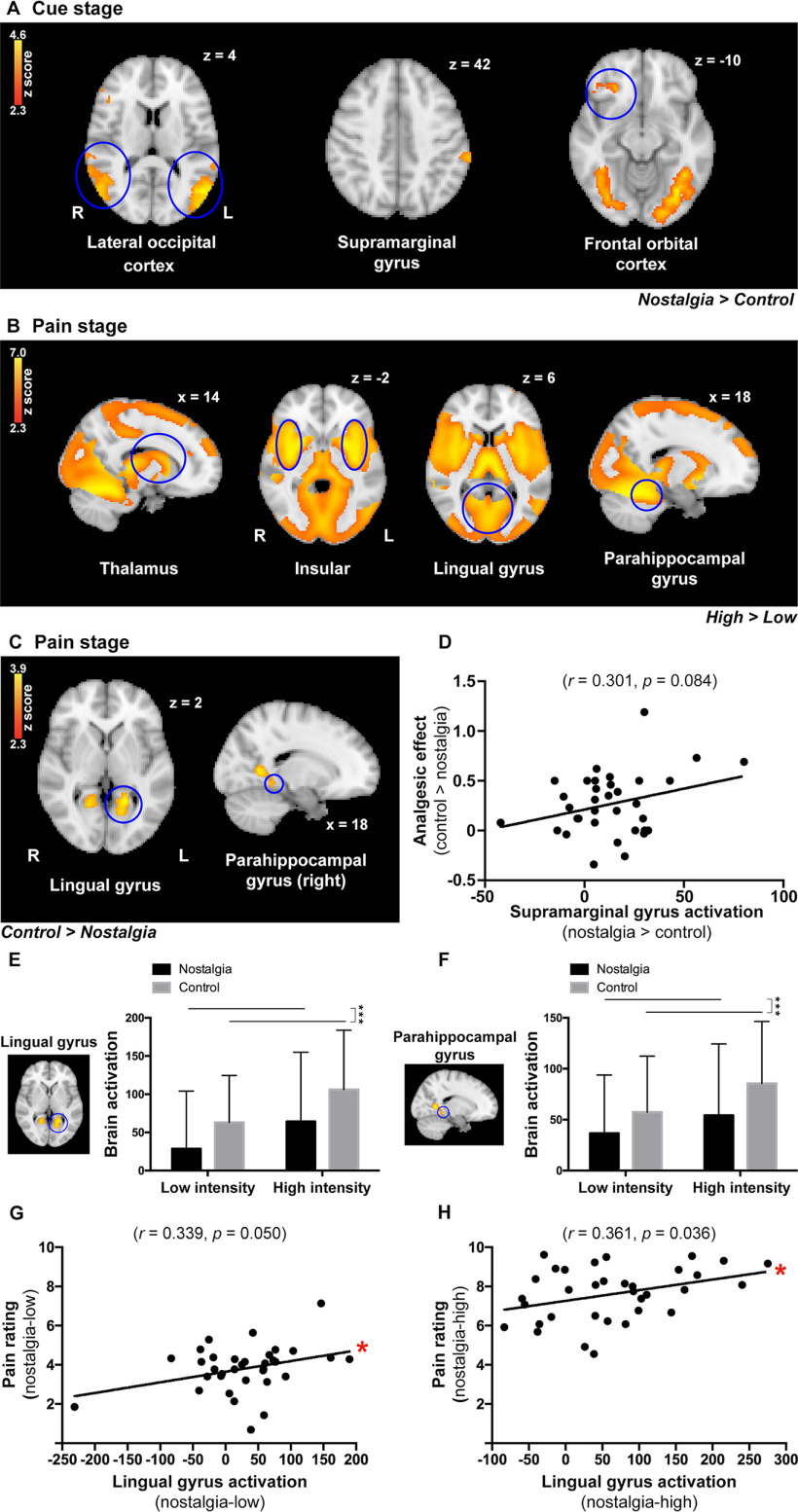Figure 3.
A, During the cue stage, brain activation of the lateral occipital cortex, the left supramarginal gyrus, and the right frontal orbital cortex was significantly increased in the nostalgia condition compared with the control condition. B, During the pain stage, brain activation of the thalamus, insular, lingual gyrus, and parahippocampal gyrus was significantly increased in the high-intensity condition compared with the low-intensity condition. C, Brain activation of the lingual gyrus and parahippocampal gyrus was significantly greater in the control condition compared with the nostalgia condition in the pain stage. D, Correlation between supramarginal gyrus activation (nostalgia > control) and the analgesic effect (control > nostalgia). E, ROI analysis revealed that brain activation of the lingual gyrus was significantly lower in the nostalgia condition compared with the control condition. F, ROI analysis revealed that brain activation of the parahippocampal gyrus was significantly lower in the nostalgia condition compared with the control condition. G, Correlation between lingual gyrus activation and pain rating in the nostalgia-low condition. H, Correlation between lingual gyrus activation and pain rating in the nostalgia-high condition (*p ≤ 0.05, ***p < 0.001).

